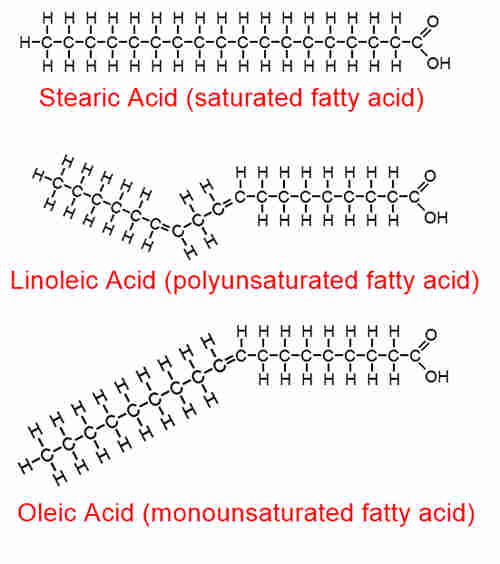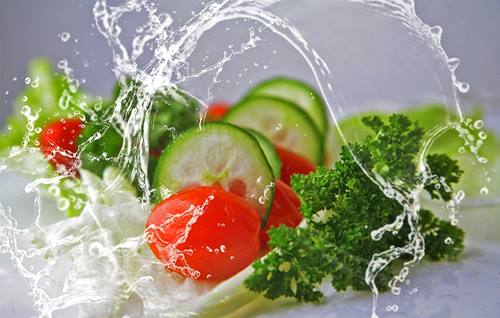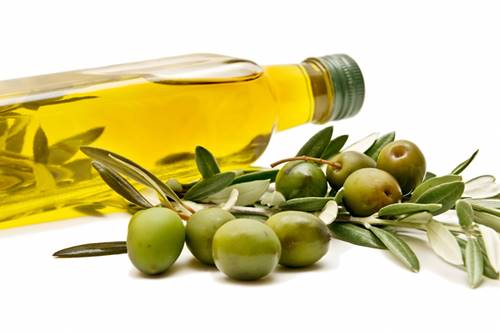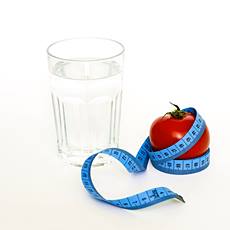A Balanced Diet
Know your Food Groups
Fact Checked
×All the content published in our website is fact checked to validate its accuracy.
Visit our guidelines web page to learn more about our strict processes regarding how we review our content's sources: reliable and reputable journals, media websites, universities, colleges, organizations, and professionals.
Our articles are based on scientific evidence, and the references are included in its footnotes, which are clickable links to sound scientific papers.
First published: 16.Oct.2018
Overview: A healthy diet for a healthy lifestyle
Balancing your diet is the first step towards healthy eating because it provides the correct proportions of nutrients (fat, carbohydrates, and protein) as well as the essential vitamins and minerals that your body needs.
Learn how to plan a balanced diet, one that includes each of the five essential food groups, and also how much you should eat of each group.
This article will show you what food is in each food group and how to incorporate them into your healthy eating plan.
In this Article (Index)
- What is a Balanced diet? Definition
- Micro-nutrients in Food
- Carbohydrates
- Protein
- Fat
- Trans fats
- Saturated Fats
- Unsaturated Fats
- Fiber
- Starches
- Sugars
- Food Groups
- Fruits
- Vegetables
- Grains
- Protein Foods
- Dairy
- Oils
- Solid Fats
- Added Sugars
- Health Benefits of Vegetables and Fruit
- Some Health Benefits of Whole Grains
- Vegetable proteins are good for you

What is a Balanced diet? Definition
A Healthy and Balanced Diet
Essential Nutrient Groups
The energy in your food comes from three macro-nutrients:
Besides these macro-nutrients, your body also needs vitamins, minerals, and water.
What is a Balanced Diet?
A balanced diet consists of consuming all of these nutrients in the correct amounts.
But what are the correct amounts of nutrients?
The US government's health specialists (through the US Department of Agriculture or USDA) have established healthy eating guidelines with the proportions that you should eat of each of these nutrients.
And to make things easier, they have grouped foods into categories based on their similarities and properties, these are known as "Food Groups".
These healthy eating guidelines define how much of each food group you need to eat to live a healthy life.
But before going into each food group, let's explain what these micro-nutrients are, and why are they so important for your health:
Micro-nutrients in Food
The energy contained in these macro-nutrients is high, and your body uses them not only as a source of energy, but also as the chemical building blocks for its internal structure your tissues, bones, and cells are built from what you eat and powered by it too:
Nutrient (1 g)
Calories
Fat
9
Carbohydrate
4
Protein
4
As you can see there are plenty of calories in fat, more than twice the calories provided by the same amount of carbs or protein.
Protein
There are thousands of different proteins. Your body breaks down the proteins in your food into their component molecules, called amino acids.
Your body then reassembles the amino acids into new proteins. It does so by joining them up in sequences set down by your DNA.
There are some 20 different types of amino acids of which eight are essential in your diet because your body can't make them. You must get them from what you eat.
It is important (especially for those following vegan or vegetarian diets) to eat a mix of plant protein that contains these essential amino acids.
Fats and Oils
Fats and oils share a similar chemical structure. The obvious difference is that oils are liquid at room temperature (i.e., olive oil or canola oil), and fats are solid or semi-solid at room temperature (lard, butter).
The fats in your diet are known as triglycerides, meaning that they have a "head" formed by a glycerol molecule, a sweet-tasting type of alcohol, and three fatty acid tails linked to the head. That is why they are "tri" glycerides, "tri" = three.
These tails are what make a fat liquid or solid. They come in different varieties depending on their tails.
Saturated Fats
Saturated fats have "straight" tails because the chemical bonds between the carbon atoms that make up the fatty acid chain are of a kind known as "single" bonds.
As they are straight, the tails can line up and pack closely together, and the attraction between close chains enhances this effect. The outcome is solid fat.
Most animal fats are saturated fats.
Unsaturated Fats
These fatty acids have "bent" tails due to the double bonds between some carbon atoms along the chain. This does not allow them to pack neatly together so they occupy more space, and are liquid.
Depending on the number of double bonds they can be mono-unsaturated (only one double bond), or poly-unsaturated (several double bonds).
Most vegetable fats are unsaturated.
The following image shows these different kinds of fats. Simple bonds are shown C-C, double bonds C=C.

Carbohydrates
Carbohydrates are chemical compounds that include different types of sugars, starch, and cellulose. The carbohydrates in your diet come from plants.
Glucose is a simple sugar and is the building block of both cellulose and starches. Glucose molecules link to each other and form long "polysaccharide" chains (from "poly" = many, and "saccharide" = sugar). When these are very long and pack closely together with crosslinking chains, they are known as cellulose.
Cellulose makes up the bodies of plants. Humans can't digest it (the crosslinking is hard to break apart). This type of carbohydrate is known as fiber.
Fiber
As you can't digest it, you can't get energy from fiber, but it is good for your digestive system. It comes in two varieties:
- Insoluble Fiber. Mostly made up of cellulose, you can find it in wheat bran, whole grains, and vegetables.
- Soluble Fiber. It dissolves in water and forms a viscous gel that has cholesterol-lowering properties. You will find it in oat bran, nuts, lentils, peas, and beans.
There is scientific evidence that fiber helps control weight, reduce irritable bowel syndrome (IBS) symptoms. It also has positive effects on heart disease, diabetes, and constipation.
Starches
The plants store the energy that they obtain from photosynthesis as starch. These, unlike cellulose, are shorter polysaccharides that you can easily digest.
Cereals produce seeds known as grains, and these are the main sources of starch: rice, wheat, corn, rye, barley, oats, etc. Tubers are also rich in starches.
Starches are the main components of bread, pasta, baked products, and biscuits.
Sugars
Plants build simple sugars by combining hydrogen, oxygen, and carbon atoms. These can have five or six carbon atoms linked together to form single-molecule sugars known as monosaccharides.
The most common monosaccharides are glucose, fructose (found in fruits), and galactose (found in milk). These simple sugars can also link up to form disaccharides (two sugar molecules) such as sucrose (this is what we commonly call "sugar"), lactose (in milk), and maltose, just to mention a few.
Sugar is an energy-dense food: it has lots of calories packed into small quantities.
A Healthy Diet
Fat, carbohydrates, and protein have to be eaten in the proper proportion to help you maintain healthy body weight and feel energetic and vital. To simplify the process of including them in your diet, the concept of Food Groups was created. More on this below.
Food Groups
Food groups are categories that combine different foods that are similar in composition and nutrients so that they can be easily understood and applied to a diet plan.
The US has defined five main food groups:
Your diet should include foods from these five groups.
You should limit the intake from these other "groups" because they are packed with calories and may also have harmful health effects:
We will look into each of these groups in the following sections.
Fruits
Fruits are a good source of fiber (especially their skins), vitamins, and minerals. They also provide water that will help you reach your daily hydration goals.
Fruits are rich in sugars -loaded with fattening calories, so your balance of vegetables and fruits should include more veggies than fruit.
Despite the MyPlate recommendations (1), fruit juice is not the same as "natural" fruit. It often lacks fiber and concentrates the sugars. In the case of processed juices, they may even have added sugars.
Health Benefits of Vegetables and Fruit
Heiner Boeing et al. (2012) (2) performed a meta-analysis of different scientific studies and found evidence that consuming more vegetables and fruits has the following positive health effects:
- It reduces the risk of hypertension, coronary heart disease, and stroke.
- "Probable evidence" of lower cancer risk.
- It may prevent body weight gain.
- Indirectly reduces the incidence of type 2 diabetes mellitus.
- "Possible evidence" that it lowers the risk of certain eye diseases, dementia, and osteoporosis.
- It prevents asthma, rheumatoid arthritis, and chronic obstructive pulmonary disease.
Group - age
Cups per day
Women 19 - 30
2
Women +31
1 ½
Men +19
2
Other countries recommend that you should aim at 2-servings of fruit each day.
A serving is a 3 ounce (80 g) portion of fruit: a slice of cantaloupe or melon, one banana, an apple, or a pear.
Include a wide variety of fruit in your diet: berries, pineapple, figs, kiwi, apricots, peaches, mangoes, oranges, and grapefruits. There are many options.
Vegetables
The USDA recommends the following daily intake of vegetables:
Group - age
Cups per day
Women 19 - 50
2 ½
Women +51
2
Men 19 - 50
3
Men +51
2 ½
In other parts of the world, the target is 5-servings of vegetables and fruits per day. Both should add up to roughly one-third of your daily food intake.
Americans don't eat enough vegetables (mostly potatoes and most of them as French fries!). Potatoes are starchy vegetables, full of carbohydrates, so you should try to replace them with other fiber and nutrient-rich veggies.
You can include more vegetables by eating a salad as a side dish during lunch or dinner.
Include colored vegetables such as tomato, bell peppers, squash. Add leafy vegetables such as kale, spinach, celery, and arugula. A touch of parsley can add flavor.
Starchy vegetables include sweet potato, potatoes, and green peas. Beans and legumes (soybeans, tofu, black beans, chickpeas, and lima beans) can also be considered as part of the protein foods group because they have a high protein content.

Grains
Cereals (wheat, barley, rice, corn, oats, and rye) and food made with them, are considered grains, these are "starchy foods", rich in carbohydrates.
You will find grains in bread, pasta, tortillas, popcorn, your breakfast cereal, and processed foods made with flour and starches. Quinoa, bulgur, and buckwheat can also be considered grains.
The best option is to eat "whole" grains (whole wheat, and whole oats for instance) because they contain a higher proportion of fiber and also more minerals and vitamins that are concentrated in the fiber-rich husk that is not removed from whole grains.
Brown rice and whole-wheat pasta are other options of whole grain based foods.
Half of your grain intake should be whole grains.
Baked grain products (bread, biscuits, and cookies) usually have a lot of fat (trans fats or saturated fats) and added sugars, so try to choose low-fat low-sugar options. Bear in mind that low-fat processed foods usually compensate for the lack of fat by adding sugars to the product. So check the nutrition facts label!
Starchy vegetables such as potatoes also fall in this category, as they are rich in simple carbs. The potatoes' skins are a good source of fiber though.
Those who have celiac disease or gluten intolerance must avoid grains that contain gluten, and food made with them. Learn more about a Gluten Free diet. Gluten-containing grains (wheat, barley, rye) can be replaced with quinoa, rice, amaranth, buckwheat, millet, sorghum, oats, teff and corn.
The USDA recommends the following daily intake of grains (in ounce equivalents):
Group - age
oz equivalents
Women 19 - 50
6
Women +51
5
Men 19 - 30
8
Men 31 - 50
7
Men +51
6
One slice of bread, 1 cup of breakfast cereal, half a cup of cooked rice or pasta are equal to a one-ounce equivalent.
Some Health Benefits of Whole Grains
Skerret and Willett (2010) (3) pointed out that carbohydrates have grown in the American diet at the expense of fat and most of it is highly processed grains, from which the healthy fiber, vitamins, minerals, phytonutrients, and some healthy plant fats have been removed.
These highly processed grains are linked to "an increase in triglycerides and a reduction in protective HDL" (HDL is the "good cholesterol").
On the other hand "eating whole grains or cereals high in fiber, rather than highly refined grains, reduces the risk of cardiovascular disease and type 2 diabetes. Although reductions in the risk of colon cancer by diets rich in whole-grain fiber have been difficult to document, such a dietary pattern has been clearly associated with reductions in constipation and diverticular disease."
Protein Foods
Eggs, fish, beans, seafood, meat, beef, poultry, nuts, and seeds are all sources of protein.
Fish
Aim for 2-portions of fish each week, one of them an oily fish. The USDA recommendation is 8 ounces of cooked seafood per week.
Fish is a good choice because it is rich in vitamins and minerals. Oily fish are packed with healthy omega-3 fatty acids.
Canned, frozen, and fresh fish are all valid options. Small fish such as sardines or trout will have lower levels of toxic mercury in them in comparison to large fish such as tuna.
Eggs
A great option for vegetarians (ovo-lacto-vegetarians). They have plenty of protein (in the white of the egg).
Meat
Poultry, pork, mutton, and beef are excellent sources of protein plus iron, zinc, and B vitamins. Aim at lean cuts and avoid the skin of poultry. Cut off excess fat (it is mainly saturated fat).
Cook well to kill any bacteria lurking in the uncooked parts.
Use high-quality protein sources and avoid processed meats such as sausages, hot dogs, bacon, and cold cuts such as ham.
Vegetable proteins are good for you
Beans, legumes, chickpeas, and foods obtained from them (tofu) are sources of vegetable proteins. Nuts and seeds also have protein. Consume a variety of different foods.
These plant proteins have a positive effect when compared to animal protein: Skerret and Willett (2010) (3) cited the "Nurses' Health Study", which suggested that "eating more protein from beans, nuts, seeds, and the like, while cutting back on easily digested carbohydrates reduces the risk of heart disease... eating more animal protein while cutting back on carbohydrates did not reduce heart disease risk."
This implies that saturated fats associated with animal origin protein may be a negative influence on those proteins.
The USDA recommends the following daily intake of protein sources (in ounce equivalents):
Group - age
oz equivalents
Women 19 - 30
5 ½
Women +31
5
Men 19 - 30
6 ½
Men 31 - 50
6
Men +51
5 ½
Dairy
Adults don't consume enough dairy products. The best choice is fat-free or low-fat options (once again, keep an eye on the added sugar content).
Cheese, milk, and yogurt are not only good sources of protein, they are rich in calcium -which is good for your bone health.
Lactose intolerant people can try lactose-reduced milk or non-dairy alternatives such as almond milk or soybean milk.
The daily dairy allowance recommended by the USDA is:
Group - age
Cups
Women +19
3
Men +19
3

Oils
Despite being calorie-dense products, that should be consumed in small amounts, they are essential for heart health and brain function.
Try to avoid trans fats and fried foods (they soak up the oil they are fried in).
Unsaturated fats
Extra virgin olive oil, oils from nuts, olives, seeds, avocados, and fish oils provide healthy fat options, and they are also a source of vitamin E. Peanut butter is roughly 50% fat, and combines saturated palmitic oil with unsaturated oils.
Unsaturated fats are an important part of a healthy diet. They come in two varieties: monounsaturated fats (such as canola and olive oil, almonds, cashews. and avocados), and polyunsaturated fats like the oily fish's omega-3 fats or omega-6 fats. They are also found in safflower or soybean oil, and Brazil nuts.
Some examples of oil content in foods. You will find one tablespoon of oil in:
- One-half medium avocado.
- 24 large olives.
- One-half tablespoon of peanut butter.
- 10 half-walnuts.
The USDA's daily allowance of oils is the following:
Group - age
teaspoons
Women 19 - 30
6
Women +31
5
Men 19 - 30
7
Men +31
6
This covers the food groups, but there are two additional categories with food that should be consumed sparingly. Solid Fats and Added Sugars.
Solid Fats
As mentioned further up (see Fats), solid fats are mostly saturated fats. Their physical and chemical structure causes them to be solid at room temperature.
Some oils, such as palm oil, coconut oil, and palm kernel oil are high in saturated fats and considered as fats, not oils by the USDA's guidelines.
Other examples of solid fats are animal-origin fats: beef fat, tallow, pork fat, chicken fat, shortening, and butter.
Finally, there is the artificial "Trans Fats":
Trans fats
These are man-made fats produced by saturating vegetable oils: the double bonds of healthy oils are replaced with hydrogen atoms, a process known as "hydrogenation".
This is a high-pressure process catalyzed with nickel or palladium metals. Trans fats are not good for the cardiovascular system.
Avoid processed foods that list "Shortening," "vegetable shortening," and "partially hydrogenated vegetable oil" as well as "trans fats."
Trans fats are used in processed foods because they give them a nice texture and make them palatable but they are bad for cardiovascular health (3).
Some natural trans fats are produced by bacteria in the gut of cows and sheep. These are harmless and "this trans fat may impart health benefits beyond those associated with CLA" (Field et al. 2009) (4).
Skerret and Willett (2010) also found that "a low intake of trans and saturated fat and a higher intake of unsaturated fats reduce the risk of cardiovascular disease and diabetes." (3)
Added Sugars

Sugar is usually added to processed foods to make them more palatable, low-fat foods tend to have plenty of added sugar to compensate for the lack of flavor that fat removal causes.
Americans tend to eat too many sweet and sugary processed foods.
Candy, chocolate, cakes, biscuits, sodas, cola drinks, and ice cream, all of them pack a lot of calories due to their high sugar content.
This could lead to weight gain and an increase in health-risk conditions such as heart disease or type 2 diabetes. But the evidence is contradictory for the time being (Khan and Sievenpiper, 2016) (5).
Check the ingredients list of the processed food you buy, sugar will appear there under a wide variety of names:
- Brown sugar.
- Corn syrup.
- Dextrose.
- Fructose.
- High-fructose corn syrup.
- Raw sugar.
- Molasses.
- Sucrose.
- Lactose.
Those are just a few of the names "sugar" adopts when it is added to food.
Some Healthy Diets
Cena and Calder (2020) (6) looked into certain regional diets and diets designed to reduce disease risks and found that they "prevent disease and⁄or positively influence health. In total, evidence from epidemiological studies and clinical trials indicates that these types of dietary patterns reduce risks of NCDs [non-communicable diseases] including cardiovascular disease and cancer."
These "regional diets" and "healthy diets" include the Mediterranean Diet, the Nordic diet, DASH (Dietary Approaches to Stop Hypertension), Mediterranean-DASH Intervention for Neurodegenerative Delay (MIND), Traditional Asian diets (Japanese, Korean and Chinese).
All these diets include plenty of vegetables, seeds, fruit, legumes, nuts, grains, healthy oils, and fiber; and compared to the typical Western diet, they have fewer animal-based foods.
Closing Comments
Remember that eating a wide variety of healthy foods will promote good health and protect you against chronic disease.
A well-balanced diet means eating different foods from each of the five food groups, and following the recommended serving proportions.
Avoid trans fats, saturated fats, excess sugar, and salty processed foods. Eat a variety of foods from each group.
The USDA's MyPlate initiative (2) does not mention water intake, salt restriction, or increased physical activity as other factors to take into account for improving health. But they should also be considered for a balanced and healthy lifestyle.
References and Further Reading
(1) United States Department of Agriculture, MyPlate. Accessed Dec. 20, 2020.
(2) Heiner Boeing et al., (2012).Critical review: vegetables and fruit in the prevention of chronic diseases. Eur J Nutr. 2012 Sep; 51(6): 637-663. 2012 Jun 9. doi: 10.1007/s00394-012-0380-y
(3) Patrick J. Skerrett, and Walter C. Willett, (2010). Essentials of Healthy Eating: A Guide. J Midwifery Womens Health. 2010 Nov-Dec; 55(6): 492-501. doi: 10.1016/j.jmwh.2010.06.019
(4) Field CJ, Blewett HH, Proctor S, and Vine D., (2009). Human health benefits of vaccenic acid. Appl Physiol Nutr Metab. 2009 Oct;34(5):979-91. doi: 10.1139/H09-079
(5) Khan TA, Sievenpiper JL., (2016). Controversies about sugars: results from systematic reviews and meta-analyses on obesity, cardiometabolic disease and diabetes. Eur J Nutr. 2016 Nov; 55 (Suppl 2): 25-43. doi: 10.1007/s00394-016-1345-3. Epub 2016 Nov 30
(6) Cena, H., & Calder, P. C. (2020). Defining a Healthy Diet: Evidence for The Role of Contemporary Dietary Patterns in Health and Disease. Nutrients, 12(2), 334. https://doi.org/10.3390/nu12020334
Nutrition Australia Healthy Eating Pyramid. Accessed Dec. 20, 2020.
National Health Service, UK, Eating a balanced diet. Accessed Dec. 20, 2020.
NIH, National Heart, Lung, and Blood Institute (NHLBI) USA Healthy Eating Plan. Accessed Dec. 20, 2020.
Department of Health & Human Services, State Government of Victoria, Australia. Healthy Eating. Accessed Dec. 20, 2020.
About this Article
A Balanced Diet, A. Whittall
©2023 Fit-and-Well.com, 21 Oct. 2023. Update scheduled for 21 Oct. 2025. https://www.fit-and-well.com/diet-food/balanced-diet.html
Tags: carbohydrates, sugar, added sugar, starch, food, fruit, fats, protein, vegetables, grains, dairy, food groups, healthy eating


